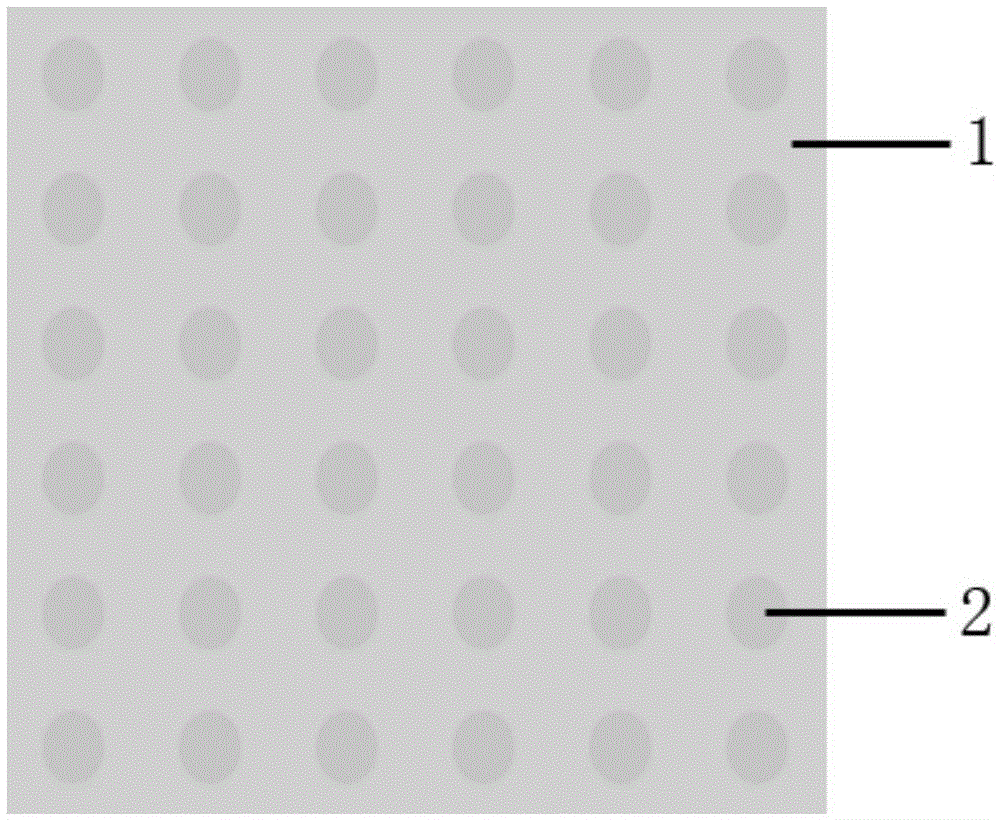Treponema pallidum IgM antibody Dot-ELISA detection method
A technology of treponema pallidum and detection method, which is applied in the direction of measuring devices, biological tests, material inspection products, etc., can solve the problems of serological detection sensitivity, low specificity, high clinical missed diagnosis and misdiagnosis rate, and low sensitivity, so as to avoid Antigen denaturation, extended storage time, and wide application range
- Summary
- Abstract
- Description
- Claims
- Application Information
AI Technical Summary
Problems solved by technology
Method used
Image
Examples
Embodiment 1
[0028] see figure 1 , the dot-ELISA detection method of described Treponema pallidum specific IgM antibody, comprises the steps:
[0029] (1) Preparation of Treponema pallidum-specific recombinant antigen:
[0030] Using gene cloning technology, PCR amplifies the DNA encoding Treponema pallidum antigen, inserts it into Escherichia coli for expression, and obtains Treponema pallidum-specific recombinant antigens TPN17 and TPN47.
[0031] (2) Preparation of nitrocellulose membrane coated with recombinant antigen:
[0032] Use a circular puncher with a diameter of 6 mm to press on the smooth surface of nitrocellulose to form a circular hole as the spotting site; use a micropipette to take 0.5 μL of the antigen mixture and add it to the nitrocellulose membrane. In the center of the imprint, dry at room temperature; immerse the nitrocellulose membrane after spotting in 5% skimmed milk powder, and seal at room temperature for 30 minutes; place the sealed nitrocellulose membrane in...
Embodiment 2
[0049] The dot-ELISA detection method for Treponema pallidum-specific IgM antibodies is given below to detect Treponema pallidum antibodies in clinical samples of patients:
[0050](1) Test specimen processing:
[0051] Take 5 mL of human venous blood, put it in a water bath at 37°C for 30 minutes, centrifuge at 3000 g for 10 minutes, and use the supernatant as a test sample for later use.
[0052] (2) Sample addition:
[0053] Add 50 μL of the sample to be tested to each well of the polystyrene micro-reaction plate wells that have been placed in the rapid diagnosis membrane, and incubate at 37 °C for 10 min.
[0054] (3) Nitrocellulose membrane washing:
[0055] Add 350μL of 0.01mmol / L pH7.4 phosphate buffer to fully wash 3 times, each time for 2min, and discard the liquid after each washing.
[0056] (4) Add 50 μL of horseradish peroxide-labeled anti-human μ chain monoclonal antibody, and incubate at 37° C. for 10 min.
[0057] (5) 350μL 0.01mmol / L pH7.4 phosphate buffer...
Embodiment 3
[0062] The stability test of the dot-ELISA detection method for Treponema pallidum-specific IgM antibody is given below:
[0063] (1) Appearance inspection: The white coated reaction film is smooth, clean, free of pollution spots and cracks, the adhesive tape has no glue opening, and no cutting oblique phenomenon.
[0064] (2) Coincidence rate of positive samples: 50 copies of positive reference sera with different titers positive for Treponema pallidum IgM antibody were tested by dot-ELISA detection method for Treponema pallidum-specific IgM antibody, and the positive coincidence rate was calculated. The positive reference serum was determined by clinical specimens determined by the TPPA (Fuji Corporation, Japan) method.
[0065] (3) Negative specimen coincidence rate: use 50 negative reference sera to test, and calculate the positive coincidence rate. The negative reference serum was determined by clinical specimens determined by the TPPA (Fuji Corporation, Japan) method. ...
PUM
 Login to View More
Login to View More Abstract
Description
Claims
Application Information
 Login to View More
Login to View More - R&D
- Intellectual Property
- Life Sciences
- Materials
- Tech Scout
- Unparalleled Data Quality
- Higher Quality Content
- 60% Fewer Hallucinations
Browse by: Latest US Patents, China's latest patents, Technical Efficacy Thesaurus, Application Domain, Technology Topic, Popular Technical Reports.
© 2025 PatSnap. All rights reserved.Legal|Privacy policy|Modern Slavery Act Transparency Statement|Sitemap|About US| Contact US: help@patsnap.com

